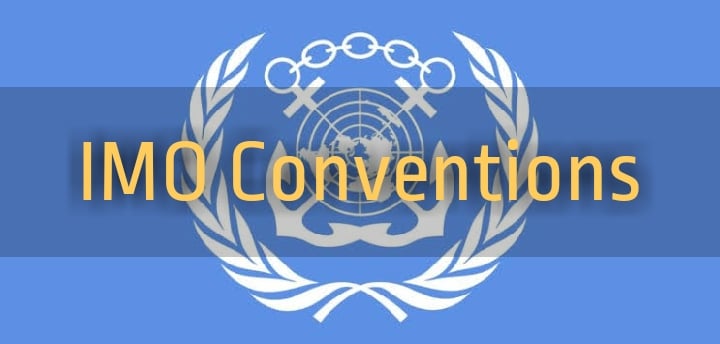Maritime Laws and Regulations
Blog post description.
12/18/20243 min read


A Comprehensive Guide to Maritime Laws and Regulations for Seafarers
Introduction:
The maritime industry is governed by a web of international, regional, and national laws aimed at promoting safety, environmental sustainability, and fair labor practices. For professionals working in the industry, understanding these laws is not just an obligation—it’s a necessity.
This guide will help you navigate maritime laws and regulations, connect you with essential resources, and provide actionable steps to ensure compliance in an ever-evolving industry.
Understanding Maritime Laws and Regulations
Maritime laws, often referred to as admiralty laws, govern activities on international waters. These laws address a wide range of issues, including ship construction, crew safety, pollution control, and trade.
Why Are These Laws Important?
• Safety: Ensuring the safety of vessels, cargo, and crew.
• Environmental Protection: Minimizing pollution from maritime operations.
• Economic Fairness: Maintaining ethical practices in global shipping.
Key Maritime Conventions
The following international conventions form the foundation of maritime law:
1. SOLAS (Safety of Life at Sea):
• First adopted in 1914 after the Titanic disaster, SOLAS sets minimum safety standards for the construction, equipment, and operation of ships.
• Key SOLAS provisions include lifeboat requirements, fire safety measures, and navigation systems like AIS (Automatic Identification System).
• Focuses on preventing pollution from ships caused by oil, sewage, garbage, and hazardous materials.
• Divided into six annexes, each targeting specific types of pollution.
3. STCW (Standards of Training, Certification, and Watchkeeping):
• Establishes qualification standards for seafarers to ensure uniform training and certifications worldwide.
4. MLC (Maritime Labour Convention):
• Often called the “seafarers’ bill of rights,” the MLC sets standards for working conditions, wages, hours, and accommodations for maritime workers.
5. UNCLOS (United Nations Convention on the Law of the Sea):
• Defines maritime zones (territorial waters, EEZs, and the high seas) and the rights of states in those zones.
Port State Control ensures that foreign ships comply with international regulations while in a country’s port. PSC inspections verify compliance with conventions like SOLAS and MARPOL. Ships found to be non-compliant may face detention, fines, or bans.
Key Resources for Accessing Maritime Laws
Navigating maritime laws becomes easier when you know where to look. Here’s a list of trusted sources:
1. International Maritime Organization (IMO):
• Website: https://www.imo.org
• The IMO publishes guidelines, resolutions, and amendments to conventions.
2. International Transport Workers’ Federation (ITF):
• Website: https://www.itfglobal.org.
• A great resource for information on labor laws, collective bargaining agreements, and seafarer welfare.
3. UN Convention on the Law of the Sea (UNCLOS):
• Website: https://www.un.org/depts/los.
• Offers details on maritime boundaries and jurisdiction.
4. European Maritime Safety Agency (EMSA):
• Website: https://emsa.europa.eu.
• Focuses on maritime safety and pollution prevention in the EU.
5. Flag State Authorities:
• Each country has a flag state authority that enforces compliance with maritime laws. For example, Transport Canada (https://tc.canada.ca) and the U.S. Coast Guard (https://www.uscg.mil).
How to Stay Compliant with Maritime Laws
Step 1: Determine Which Laws Apply to Your Vessel or Role
• For international waters: Refer to IMO conventions.
• For regional operations: Check regional authorities like EMSA.
• For specific ports: Research the port’s state control requirements.
Step 2: Regularly Update Knowledge
• Subscribe to newsletters from the IMO and national authorities.
• Attend workshops, seminars, and maritime conferences.
Step 3: Leverage Technology
• Use maritime compliance software to monitor and track updates to regulations.
• Examples include DNV’s Navigator Port and ABS Nautical Systems.
Step 4: Collaborate with Experts
• Hire maritime lawyers or consultants for complex issues.
• Engage with classification societies like Lloyd’s Register or Bureau Veritas.
Common Challenges and Solutions
Challenges:
1. Complexity of Regulations: Laws vary by country, region, and port.
2. Language Barriers: Some documents are not translated into all languages.
3. High Cost of Compliance: Implementing MARPOL Annex VI (air pollution) requires significant investment in scrubbers or alternative fuels.
Solutions:
• Join industry forums to share knowledge and experiences.
• Participate in training programs like those offered by the World Maritime University (WMU).
• Utilize online tools like IMO’s e-Learning platform.
Conclusion:
Understanding maritime laws is essential for safety, environmental compliance, and smooth operations. By using the resources and strategies outlined in this guide, maritime professionals can ensure compliance and reduce risks.
